Tillandsia didisticha
Click thumbnails for full size, scaled to a new window.
Tillandsia didisticha
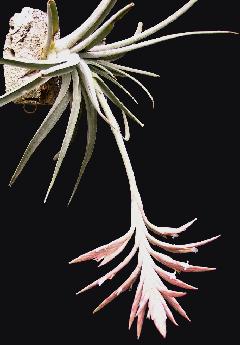
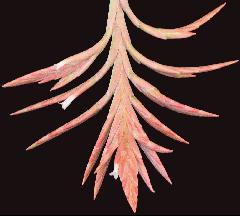
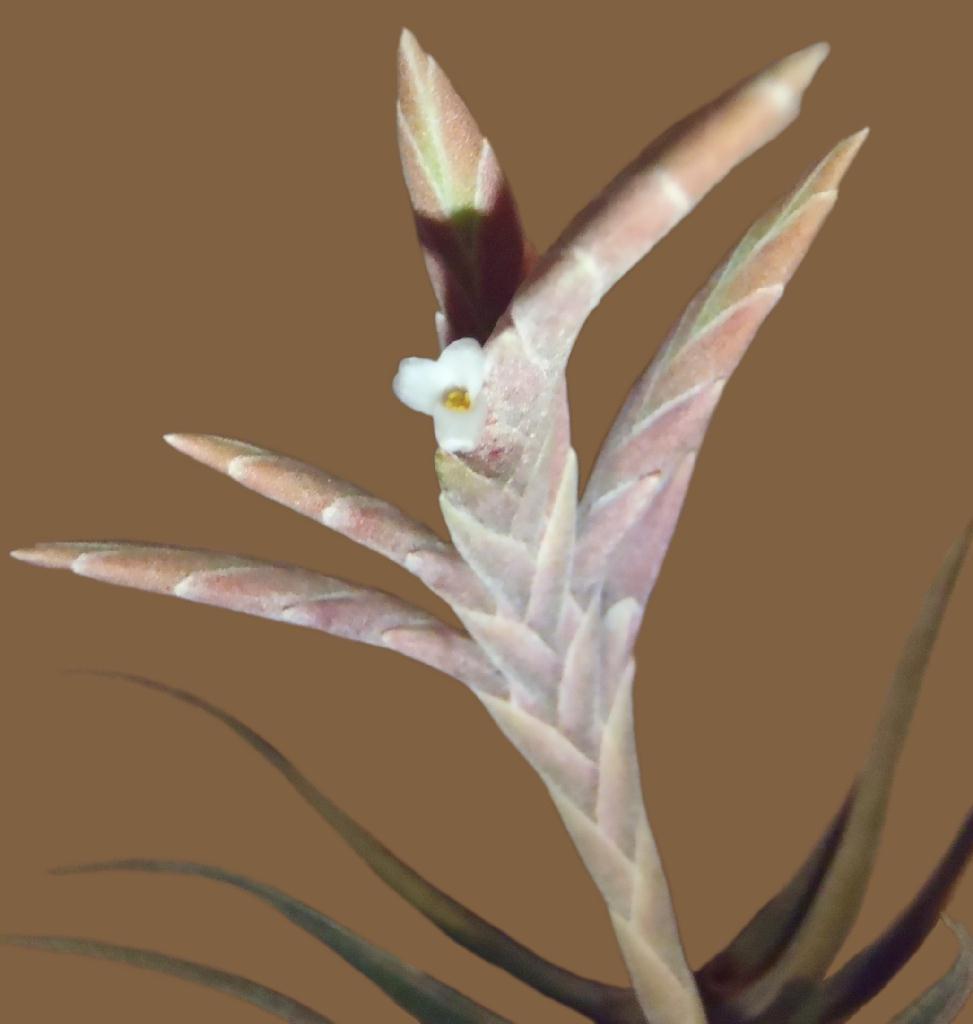
| Ken Woods. |
Terry Davis BSA Show 10/10. |
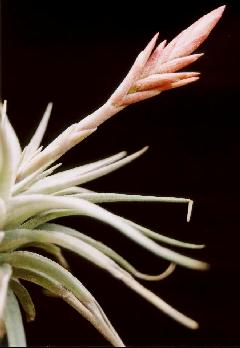
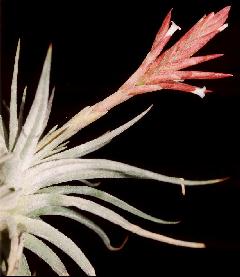
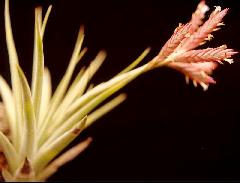
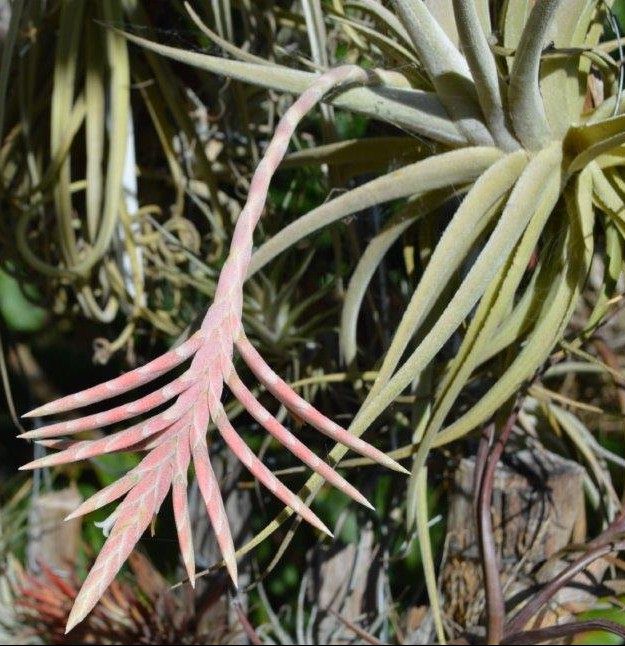
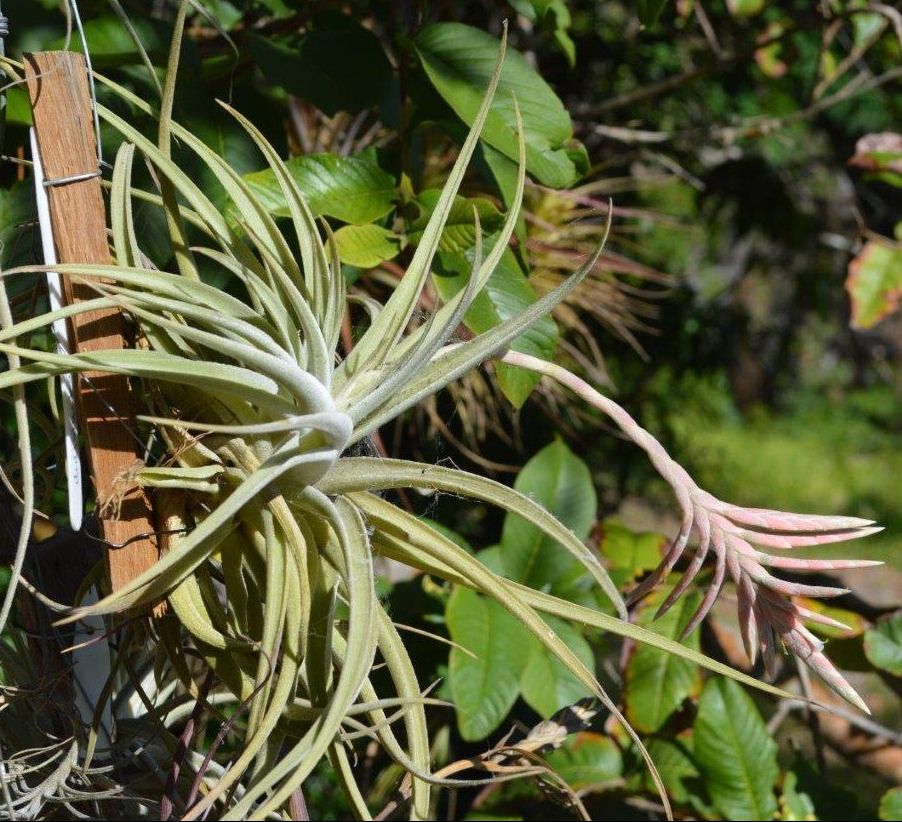
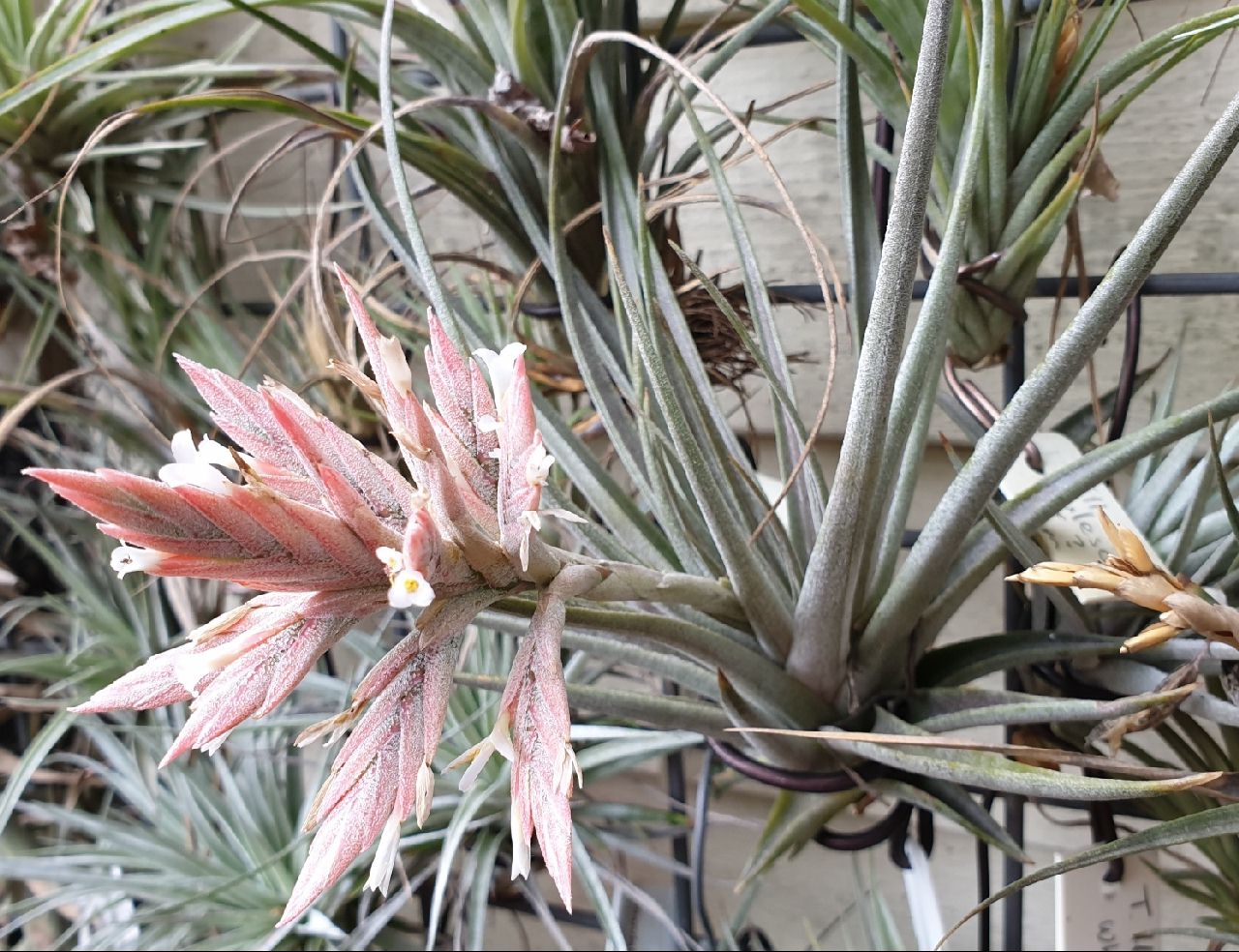
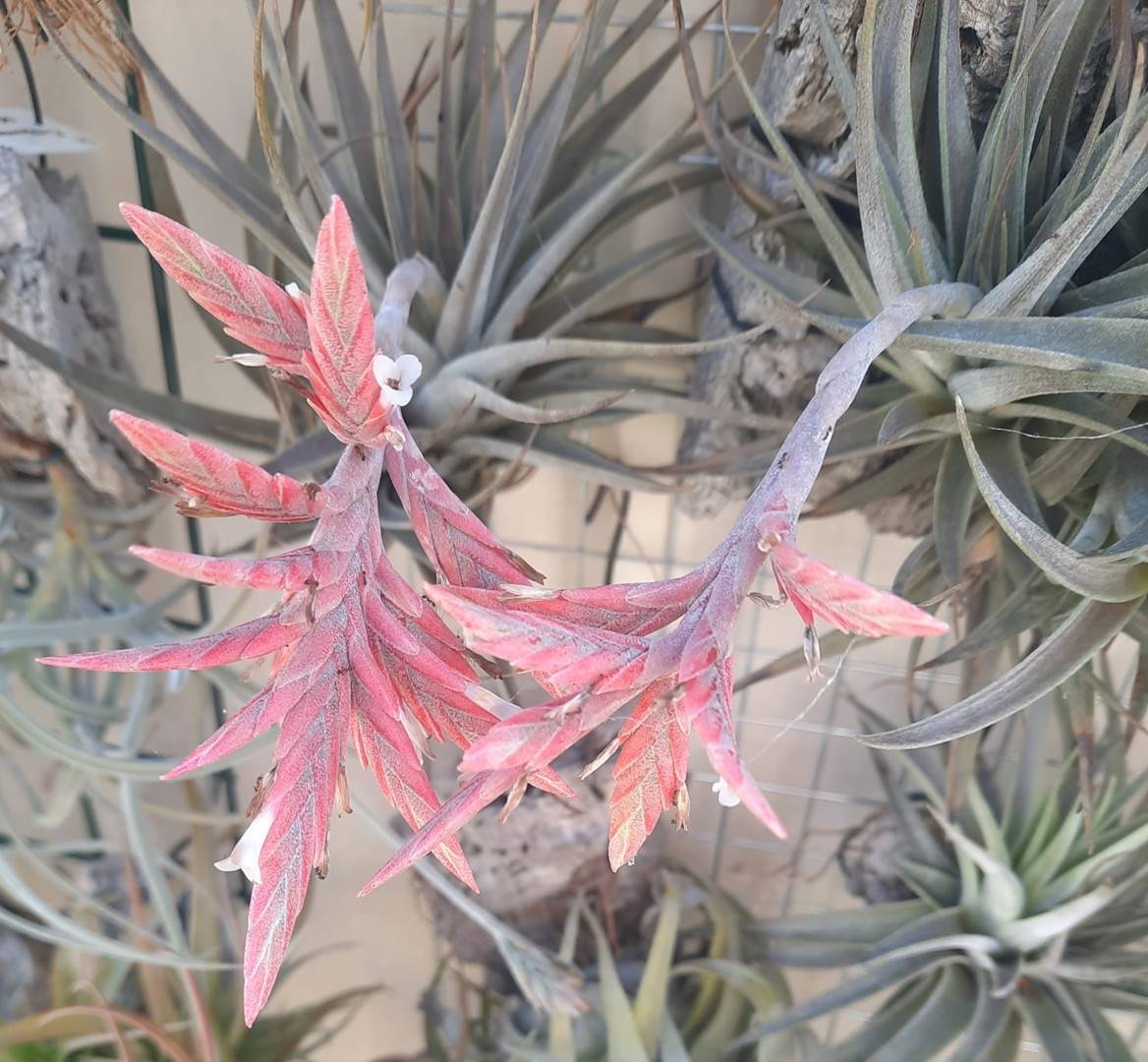
| Rob Bower 07/17 |
Chris Larson 02/19 |
Howard Martin 10/23 |
Peter Tristram ... "Rob: Great species! I think this is what we used to call the giant form of didisticha that RFI (Isley) introduced to the market back in the '80s. They rarely get super-sized for me as they flower far too regularly but I remember the giants I imported in '88. LA's climate really suites the more southern Andean species!"
Chris Larson ... "This one seems to last forever. Been out for well over a month. Collected north of Tucuman in Argentina. Somewhere between there and the Bolivian border."
Rob Bower ... "Your didistichia is a pretty chunky specimen - it seems to have forgotten to be distichous ....."
Derek Butcher ... "Interesting observation for T. didisticha but if you look at the synonyms the arrangement of the side spikes gives a bit of latitude."
Chris Larson ... "Most of what I bought back was like this - and what I saw there. I must dig out the slides."
Dale Dixon ... Re. the need for updated species descriptions... "Clearly in this example the plant that Chris posted did not match the description that Derek sent. In this description the inflorescence is described as being ‘Fan shaped - in one plane (Inflorescence bipinnate or at the base subtripinnate, dense, fan-shaped with all the spikes in one plane, 6-14 cm long, broad). Chris’ plant did not match this character and as this is a reproductive character I would place much more importance on it for identification."
Ed. ... The reluctant concensus among these correspondents is that a) Taxonomy is a remarkably slow study, b) each time another species is brought into synonymy, it expands the original description although not explicitly written into it.
Peter Tristram ... "Walter Till regards Chris’s plant as a form of the variable T. didisticha, with proviso: ‘this falls into the variable T. didisticha as long as no molecular studies have been conducted with this group.‘ Does this infer that splitting could happen?! Don’t go changing labels yet."
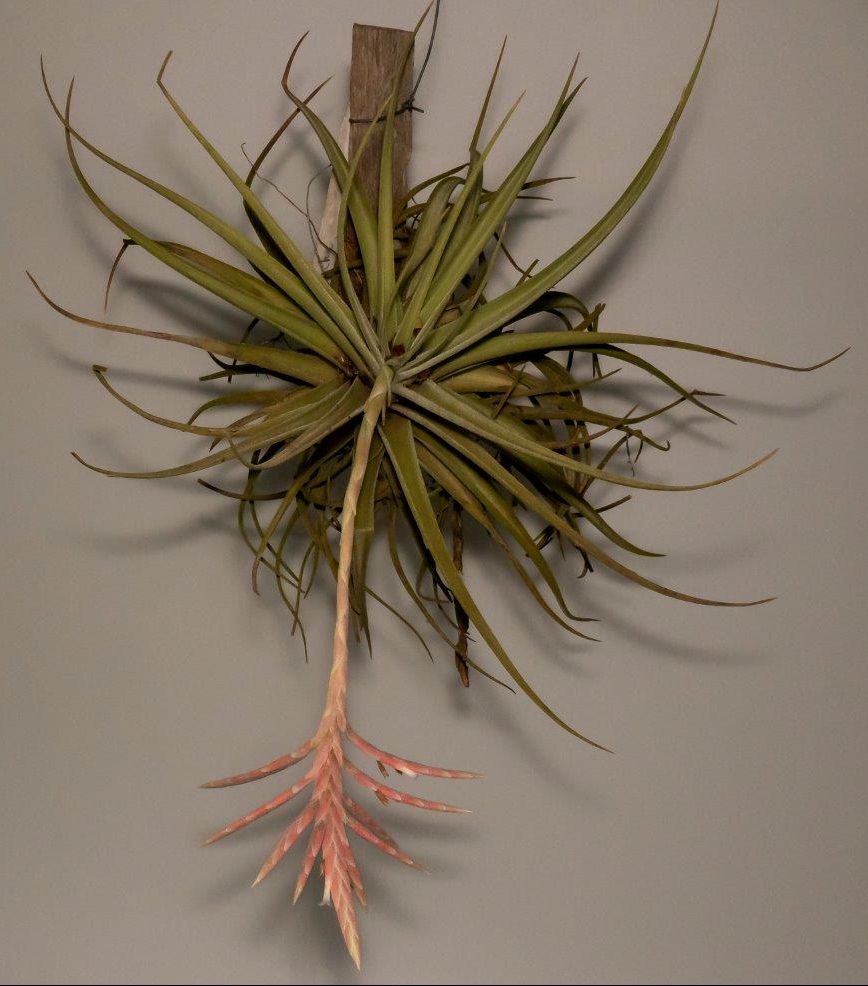
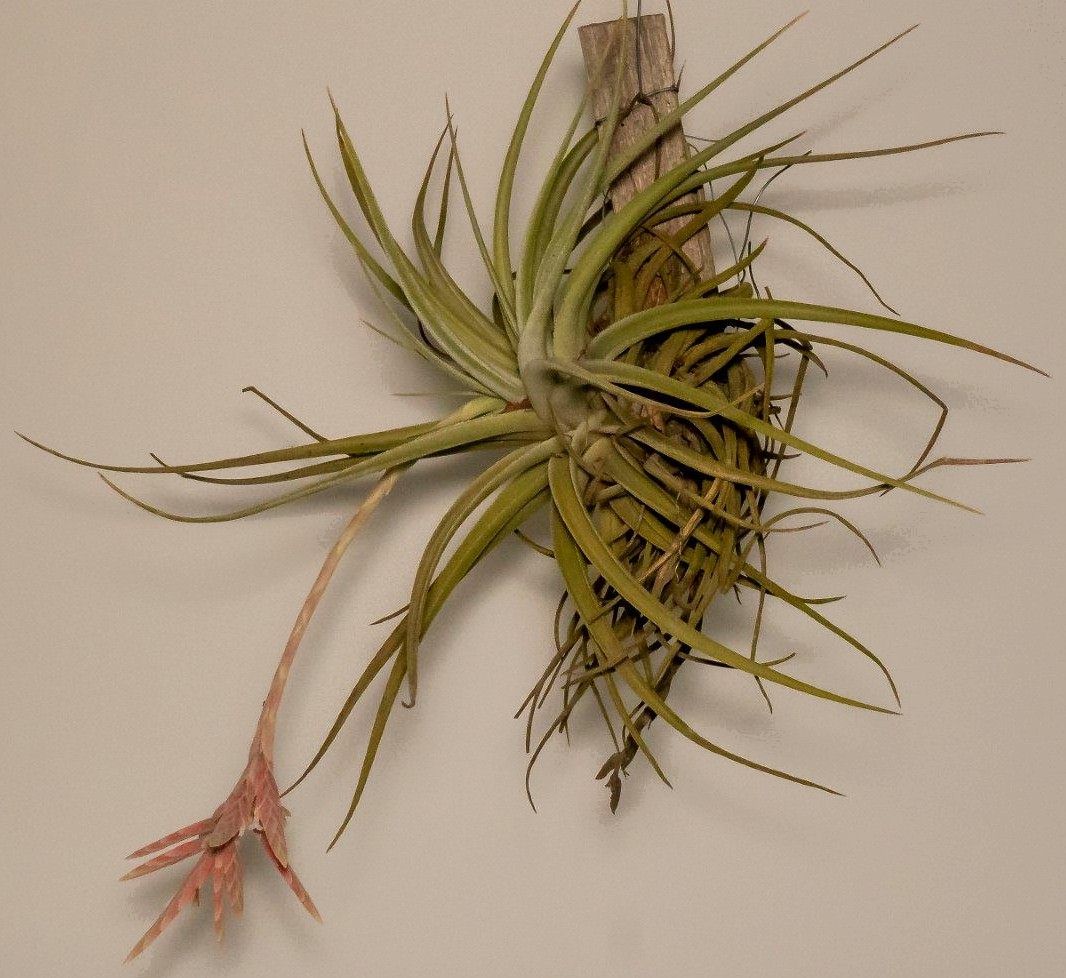
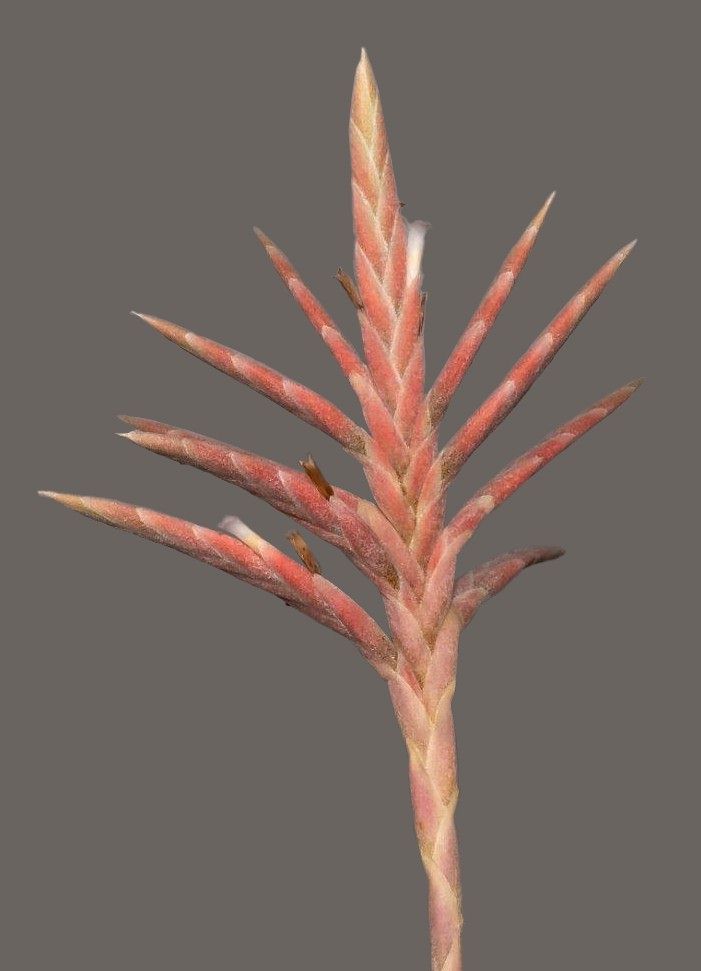
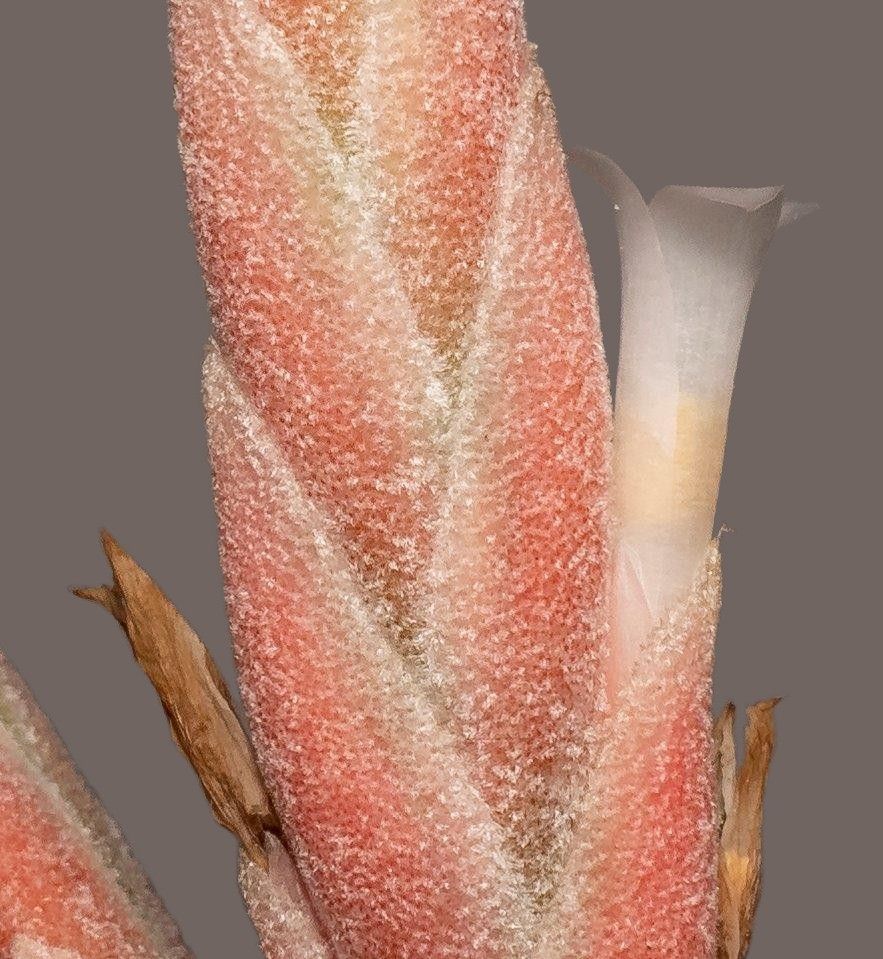
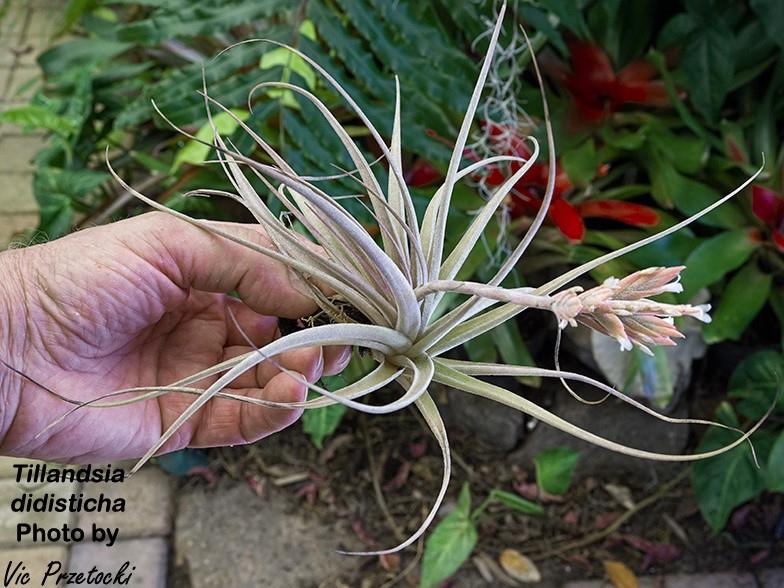
Tillandsia didisticha (E. Morren) Baker, Jour. Bot. London 26: 16.1888.
Tillandsia purpurea sensu Grisebach, Symb. Argent., Gott. Abh. 24: 332. 1879. Based on Lorentz & Hieronymus 290 (GOET), San Andres, Salta, Argentina.
Anoplophytum didistichum E. Morren, Belg. Hortic. 31: 164. 1881.
Tillandsia oranensis Baker, Handb. Bromel. 173. 1889. Type. Oran, Argentina, Simons s n (BM), Nov 1880.
Tillandsia crassifolia Baker, Handb. Bromel. 174. 1889. Syntypes. Paraguay, Balansa 709 (P). Chiquiros, Bolivia, Castelnau 2 (P).
Tillandsia goyazensis Mez, Bot. Jahrb. 30, (Beibl. 67): 11. 1901. Type. Serra dos Pirineos, Goias, Brazil, Glaziou 22196 (B, K, CH photo), 27 Aug 1895.Treated by Till as species in its own right in 2000
Guzmania complanata Wittmack, Meded. Rijks Herb. Leiden 29: 92. 1916. Type. Machareti, Camatinga, Azero, Chuquisaca, Bolivia, Herzog 1201 (L, CH photo), Dec 1910.
Desc from S&D p800-1
Plant stemless, flowering 25-35 cm high.
Leaves many in a dense rosette, 1-3 dm long;
Sheaths obscure, flat, glabrous toward base;
Blades very narrowly triangular, long attenuate, channeled, 6-20 mm wide, covered with subappressed cinereous scales.
Scape erect, slender;
Scape-bracts imbricate and covering the scape, elliptic, acute, densely lepidote. Inflorescence bipinnate or at the base subtripinnate, dense, fan-shaped with all the spikes in one plane, 6-14 cm long, broad;
Primary bracts erect, nearly imbricate, like the scape-bracts, much shorter than the spikes;
Spikes curved-spreading from an erect base, narrowly lanceolate, 3-8 cm long, strongly complanate, the sterile base with imbricate reduced bracts.
Floral bracts imbricate and covering the rhachis, ovate, acute, 11-15 mm long, equaling the sepals, carinate, papyraceous, strongly nerved, usually densely cinereous-lepidote but sometimes almost glabrous;
Flowers subsessile.
Sepals narrowly lanceolate, acuminate, 11 mm long, the posterior carinate and slightly connate;
Petals 15-20 mm long, white;
Stamens and pistil included, the filaments plicate.
Type. Jacob Makoy Hortus at Liege s n (LG ? n v), Brazil, flowered 1880. DISTRIBUTION. Epiphytic in woods and sometimes saxicolous, 500-1440 m alt, Peru (?), Bolivia, southwestern Brazil, Paraguay, Argentina. PERU (?). Without exact locality, Haenke s n (M). BOLIVIA. BENI, Cercado Mojos: Trinidad to Missiones Cuarayos, Sep 1926, Werder¬mann 2357 (MO). LA PAZ, Caupolican: Apolo, 11 Sep 1902, Williams 1484 (K, NY); Nor Yungas: Milluguaya, Dec 1917 , Buchtien 4286 (US); Sur Yungas: San Bartolome, Calisaya, Rio Bopi Basin, Jul 1939, Krukoff 10045 e p (F). COCHABAMBA, Ayopaya, Santa Rosa, Jun 1949, Cardenas 4376 (US). SANTA CRVZ, Cercado: Santa Cruz, May 1892, Kuntze s n (NY); Robare de Chiquiros, Cardenas 2958 (F, CH); Santiago de Chiquitos, Cutler 7027 (CH); Sara: Buena Vista, 6 Nov 1924, Steinbach 6664 (S). BRAZIL. MATO CROSSO: Sao Luiz de Caceres, Dec 1908, Hoehne in Rondon 556 (R); Corumba, 19 Sep 1940, Foster 1056 (CH); 6 Ocr 1953, E. Pereira, Egler & Graziela 206 (RB); Aquidauana, 27ju11969, Hatschbach 22064 (US). PARAGUAY. Rio Ypane-tuya and Irapucumi, Sep 1893, Lindman A-2163 (S); Colonia Risso, 25 Oct 1893, Lindman A-2163-B (S); Fuerte Olympo, 10 Ocr 1895, Anisits 2185 (S); Tobaly, Hassler 6230 (C); San Bernardino, Osten 8112-B (MVM); 31 Aug 1916, Osten 8801 (S); Nov 1917 , Rojas s n (MVM); Cerro Pelado, 2 Dec 1929, Jorgensen 3965 (US); Puerto Rosario, 28 Dec 1959, Woolston 1159 (US). ARGENTINA. JUYJUY, San Pedro: Sierra Santa Barbara, 9 Oct 1929, Venturi 9896 (CH, US); Ledesma: Serrania de Calilegua, 16 Oct 1963, Fabris 4466 (LP). SALTA, Oran: Tartagal, 25 Oct 1924, Schreiter 3479 (LIL, US); Abra Grande, 28 Nov 1927, Venturi 5966 (US); Guachipas: Alemania, 27 Nov 1929, Venturi 9881 (S). TUCUMAN, Tafi: Verba Buena, 14 Nov 1920, Venturi 1201 (GH, US); Burroyaco: Cerro del Campo Venturi 7741 (US).
Detail from Baker 1889
Protologue
Tillandsia oranensis Baker, Handb. Bromel. 173. 1889. Type. Oran, Argentina, Simons s n (BM), Nov 1880.
64. T. ORANENSIS Baker.
Leaves densely rosulate, linear-subulate from a suddenly dilated ovate base ¾-1 in. broad, 3-4 in. long, rounded on the back, nearly flat on the face, finely densely lepidote all over. Peduncle ½ ft. long ; bract-leaves scariose, adpressed, imbricated. Spikes 10-12, forming a dense deltoid panicle, 1½-2 in. long, ½ in. broad; flower-bracts oblong-lanceolate, ½ in. long, lepidote. Calyx nearly as long as the bract. Petal-blade oblong,.¼ in. long.
Hab. Argentaria; province of Oran, Simons ! (Herb. Mus. Brit.). Collected in 1880.
Protologue
Tillandsia crassifolia Baker, Handb. Bromel. 174. 1889. Syntypes. Paraguay, Balansa 709 (P). Chiquiros, Bolivia, Castelnau 2 (P).
70. T. CRASSIFOLIA Baker.
Leaves densely rosulate, thick, linear, rigid, 3-4 in. long, ¼ - ? in. broad low down, tapering gradually to the point, densely adpresso-lepidote. Peduncle as long as the leaves. Panicle about 3 in. long, consisting of 10-12 dense distichous spikes 1-1½ in. long, ¼ - ? in. diam. ; flower-bracts oblong-lanceolate, ½ in. long. Calyx as long as the bract. Petal-blade small, oblong, purple.
Hab. Paraguay, Balansa 709 ! Bolivia, in the province of Chiquitos, Castelnau !
Protologue
Guzmania complanata Wittmack, sp. n. Meded. Rijks Herb. Leiden 29: 92. 1916. Type. Machareti, Camatinga, Azero, Chuquisaca, Bolivia, Herzog 1201 (L, CH photo), Dec 1910.
Habitus omnino Tillandsiae. Folia intima, verisimiliter rosulata, non adsunt. Scapus erectus tantum 10.5 cm longus, dense foliis sursum versus ad vaginas reductis vestitus. Folia scapina inferiora e vagina sat angusta, 15 mm lata, sensim in laminam linearem apice subpungentem attenuata, ex sicco involuta. micante lepidota, superiora ad vaginas ovatas apice acutas caulem amplectentes reducta. Inflorescentia caule paullo longior, 12 cm longa, flabellato-panniculata, e spicis numerosis (12) sessilibus composita; spicae approximatae, distichae, valde complanatae, angustae, ad 6 cm longae, 1 cm latae, 8-12-flores. Bracteae florigerae lanceolatae acutae nervoso striatae, sepala aequantes vel paullo superantes, 11 mm longae, subleprosae. Sepala omnino libera, lineari-lanceolata, 10 mm longa. Corolla (ex cl. Herzog) alba, calyce fere duplo longior, 17 mm longa, petala usque ad medium vel ultra medium in tubum tenuem connata, lobi anguste lineares, 9 mm longi vix 3 mm lati, apice rotundati. Stamina in fauce corollae inserta petalis breviora, filamenta brevia, complanata, (cocta) ± undulata; antherae anguste lineares, 4 mm longae, in ¼ longitudine dorsifixae; pollen ellipsoideum sulcatum nec (vel vix?) reticulatum. 0varium globoso-conicum, stylus elongatus antheras aequans vel paullo supe¬rans; ovula oblonga, longe comata. Capsula ignota.
Auf einem Baume zwischen Camatindi und Machareti. 700 m (no. 1201, Dez. 1910).
Von allen Guzmannien durch die 2-zeiligen, platten, zahlreichen, schief im Winkel von etwa 45° abstehenden Aehren verschieden, vielleicht zu einer neuen Gattung zu erheben. Die weissen Blumen sind sehr zart, die Rander der Zipfel parallel.
Updated 24/12/24














